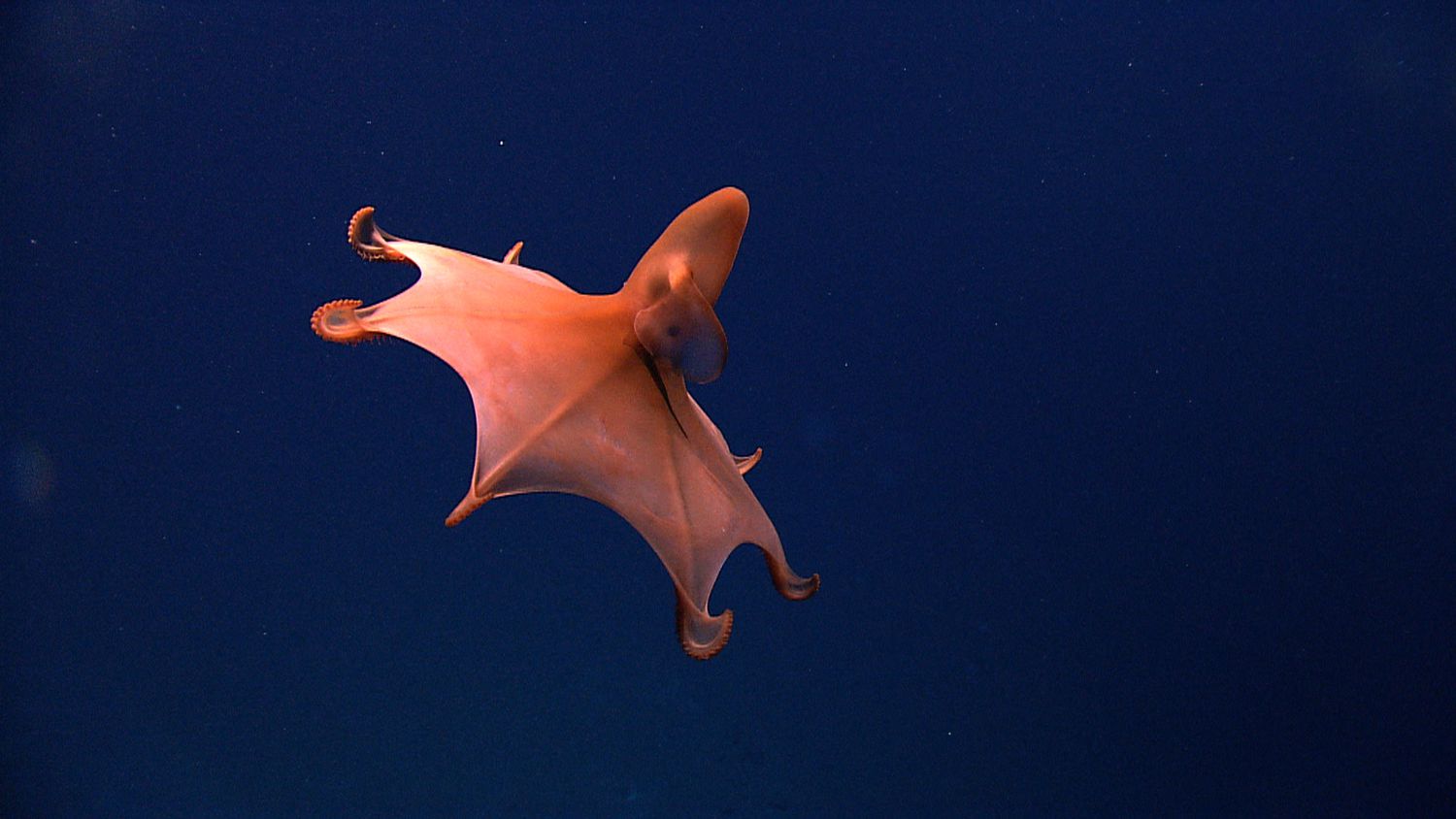
Ever wondered about the mysterious depths of the ocean and the creatures that lurk beneath? Well, buckle up because we're diving deep into the shadowy world of one of the ocean's most intriguing inhabitants: the vampire squid. With a name that sounds like it's straight out of a horror movie, you might ask, "What's so special about this sea creature?" Vampire squids are fascinating beings, not just for their eerie name but for their unique adaptations that allow them to thrive in the extreme environments of the deep sea. From their glowing bioluminescence to their ancient lineage, these squids are full of surprises. Ready to get your feet wet? Let's plunge into the abyss and uncover 20 astonishing facts about vampire squids that will leave you in awe.
Key Takeaways:
- Vampire squids are unique deep-sea creatures with fascinating adaptations, including bioluminescence and the ability to survive in low-oxygen environments, offering valuable insights into extreme life on Earth and beyond.
- Despite their ominous name, vampire squids are harmless to humans and play a crucial role in deep-sea ecosystems. Conservation efforts are essential to protect these mysterious and resilient creatures and their habitats.
What Exactly Is a Vampire Squid?
Vampire squids, contrary to what their name might suggest, are neither vampires nor traditional squids. These intriguing creatures belong to their own order, Vampyromorphida, making them unique in the cephalopod family. Living in the extreme depths of tropical and subtropical oceans, vampire squids have adapted to life in complete darkness, where pressure is intense, and oxygen levels are low.
-
Vampire squids can thrive in depths of 600 to 900 meters (2,000 to 3,000 feet), a region known as the oxygen minimum zone. Here, they have little competition and few predators, allowing them to live a relatively peaceful existence.
-
Despite their menacing name, vampire squids are small, with adults reaching only about 30 cm (12 inches) in total length.
How Do Vampire Squids Survive in Deep Water?
The deep sea is a challenging environment, but vampire squids have several adaptations that enable them to survive and thrive where few others can.
-
One key adaptation is their ability to tolerate low oxygen levels. Vampire squids have a low metabolic rate and large gills, which help them extract oxygen efficiently from the water.
-
They also possess a unique form of locomotion. Instead of jet propulsion like most cephalopods, vampire squids use their eight webbed arms to move through the water, creating a gentle, energy-efficient motion.
-
Bioluminescence plays a crucial role in their survival. Vampire squids can emit light from their bodies, which is thought to be used for communication and to confuse predators.
What Do Vampire Squids Eat?
In the deep, dark waters of their habitat, food can be scarce. Vampire squids have adapted their diet to the availability of organic material that falls from the upper layers of the ocean.
-
Their diet mainly consists of "marine snow," a mixture of dead organisms, feces, and other organic debris that sinks from the ocean's surface.
-
Vampire squids have a retractable filament, which they extend to capture particles of marine snow drifting by. This filament can be up to twice their body length.
The Reproduction of Vampire Squids
Reproduction in the deep sea is a mysterious process, and vampire squids are no exception. They have some unique reproductive strategies that ensure the continuation of their species.
-
Unlike many deep-sea creatures, vampire squids are believed to be semelparous, meaning they reproduce once and then die. However, recent studies suggest they might be capable of multiple reproductive cycles.
-
Female vampire squids carry a relatively small number of eggs compared to other cephalopods. They invest a lot of energy into each egg, resulting in a higher survival rate for their offspring.
The Defense Mechanisms of Vampire Squids
When threatened, vampire squids employ several defense mechanisms that help them avoid becoming someone else's meal.
-
They can invert their capes, covering themselves with the spiny projections on their arms, which deters predators.
-
Another fascinating defense is the release of a bioluminescent mucus. When disturbed, they eject this sticky cloud of light-producing particles, confusing predators and allowing the squid to escape.
-
Their dark, reddish-black color helps them blend into the surrounding darkness, making it difficult for predators to spot them.
The Significance of Vampire Squids to Science
Vampire squids are not just fascinating creatures; they are also valuable to scientific research, offering insights into deep-sea life and evolution.
-
Studying vampire squids can help scientists understand how life adapts to extreme environments, providing clues about the limits of life on Earth and possibly other planets.
-
Their unique position in the cephalopod family tree makes them important for studying the evolution of cephalopods and other marine life.
-
The bioluminescent properties of vampire squids are of interest for biotechnological applications, including the development of new lighting systems and biological markers in research.
The Conservation Status of Vampire Squids
Despite their deep-sea habitat, vampire squids face threats from human activities, including deep-sea fishing and climate change.
-
Currently, vampire squids are not considered endangered, but little is known about their population size and the full impact of human activities on their deep-sea environment.
-
Conservation efforts for deep-sea habitats are crucial to ensure the survival of vampire squids and countless other species that rely on these ecosystems.
Fascinating Facts About Vampire Squids
Vampire squids continue to captivate scientists and the public alike with their mysterious lives and unique adaptations.
-
Their scientific name, Vampyroteuthis infernalis, translates to "vampire squid from hell," a nod to their eerie appearance and deep-sea habitat.
-
Despite their appearance and name, vampire squids are harmless to humans. They feed on detritus, not blood.
-
The vampire squid's ability to live in such extreme conditions makes it a symbol of resilience and adaptability, showcasing the incredible diversity of life on our planet.
A Final Glimpse into the Abyss
Diving deep into the world of the vampire squid has been nothing short of fascinating. These creatures, with their unique adaptations and mysterious lifestyles, remind us of nature's complexity and the wonders that lie in the unexplored depths of our oceans. From their glowing bioluminescence to their ancient lineage, vampire squids are a testament to the resilience and diversity of life on Earth. They've adapted to thrive in environments that would be hostile to many, showcasing the incredible capabilities of nature's creations. As we continue to explore and understand the depths of our planet's oceans, let's keep in mind the importance of preserving these extraordinary ecosystems. Vampire squids, with their otherworldly appearance and intriguing behaviors, are just one of the countless reasons to protect our marine habitats. Their story is a captivating chapter in the vast, ongoing saga of oceanic exploration.
Frequently Asked Questions
Was this page helpful?
Our commitment to delivering trustworthy and engaging content is at the heart of what we do. Each fact on our site is contributed by real users like you, bringing a wealth of diverse insights and information. To ensure the highest standards of accuracy and reliability, our dedicated editors meticulously review each submission. This process guarantees that the facts we share are not only fascinating but also credible. Trust in our commitment to quality and authenticity as you explore and learn with us.


